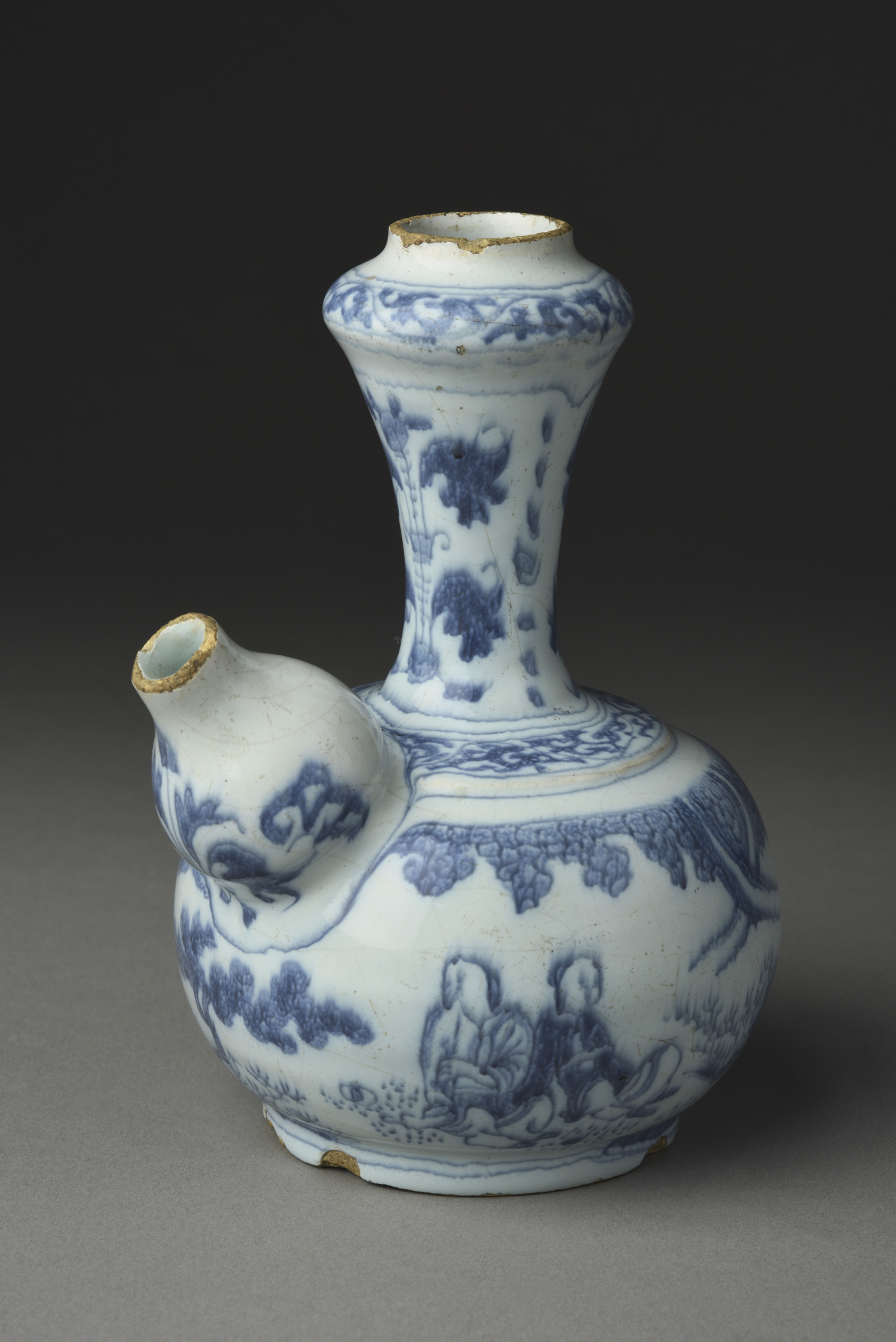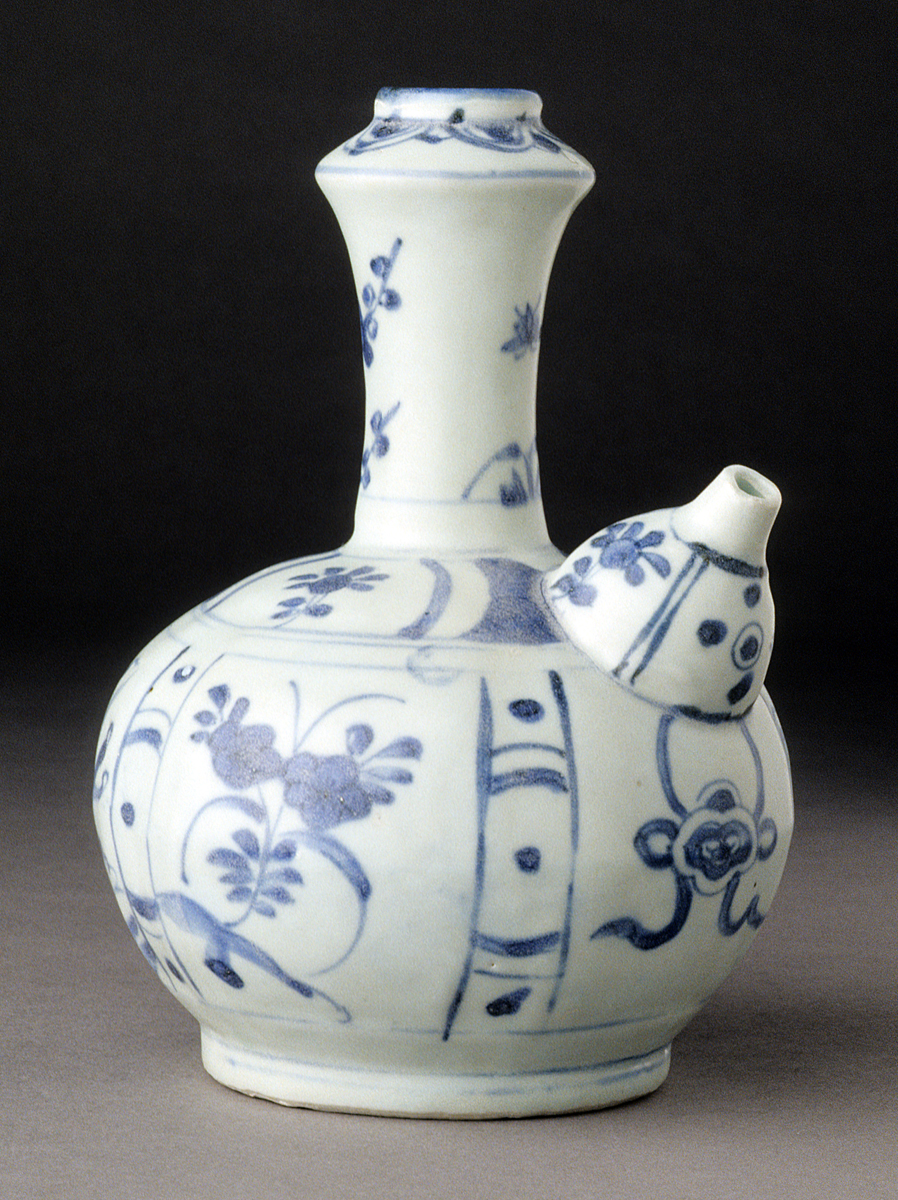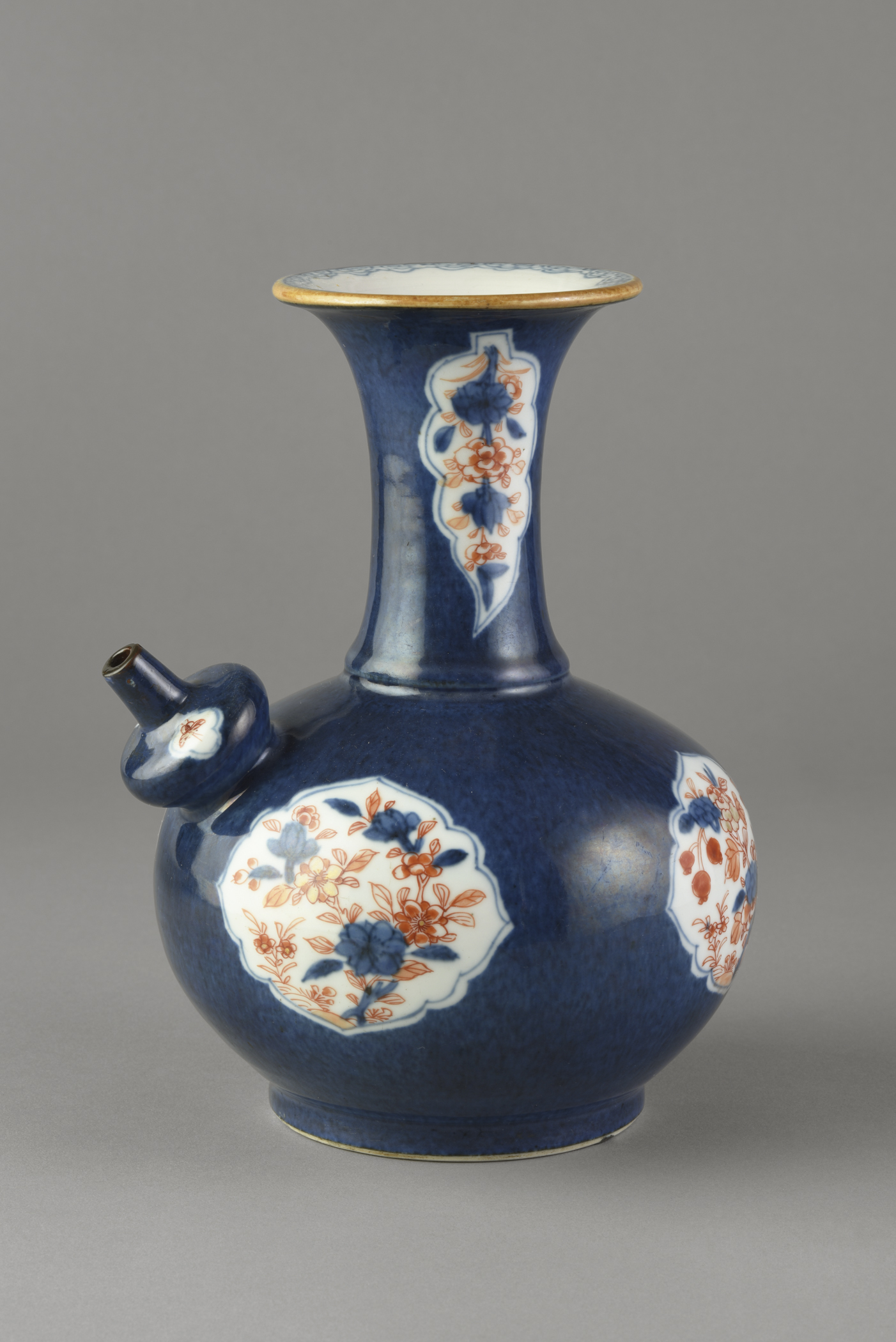


The term “kendi” may have derived from the Malaysian word kundikâ, which refers to bottles used to carry water in certain Hindu, Buddhist, or Muslim rituals. These bottles were produced in hundreds of variations from as early as the 1300s. Although some kendis bear ornament that appealed to specific markets, the examples shown here are illustrations of the world-wide fascination with Chinese ceramic ornament, which you can see elsewhere in this gallery.
These vessels inspired the creation of imitations including the tiny blue and white kendi in this display. Though it imitates Chinese porcelain, it was made of Dutch tin-glazed earthenware (Delftware) before Europe had discovered the art of porcelain-making. Kendis made in or imported to the Christian West likely were used ornamentally or for alcoholic beverage consumption.
Kendis are thought to have had sanitary advantages: the domed spout, with a tiny opening, kept dust, flies, and the like, out of the container. Additionally, raising and tilting the bottle resulted in an arc of liquid that could be caught in a would-be drinker’s mouth, without the need for their lips to touch the vessel.


